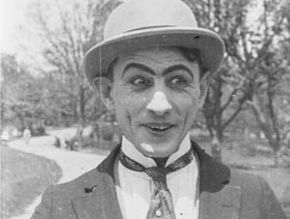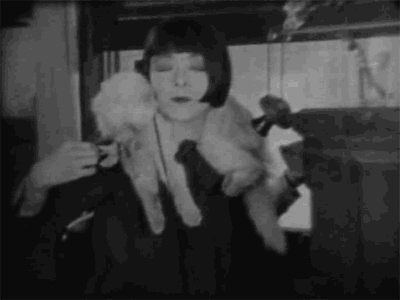On seeing this film, Dziga Vertov was distraught: he’d just been trumped by the Germans and it was a further two years before he was able to release his own “city symphony” Man with a Movie Camera (actually a tale of three cities… Moscow, Kiev and Odessa).
Berlin was being shown as part of the Barbican’s City Visions season of films exploring metropolises which includes modern films as well as the above silent symphonies and others covering Sao Paolo and Paris. For anyone attracted to early-morning urban roaming through hung-over streets and who loves watching the rhythms of the expanding city day, they are essential viewing.
%2Bstreets.png) %2Bfirst%2Bperson.png) |
| Early morning street scenes |
But these most rhythmic of visuals are a gift for live musicians and tonight though we were treated to swinging syncopation from Stephen Horne on piano, accordion and flute along with Martin Pine on drums and vibraphone. They looked like they had a ball matching their complex improvisation and I can’t recall so much audience foot-tapping in the Barbican cinema: the joint was positively jumping.
Film historian, Ian Christie, introduced and pointed out that most silent film would have been accompanied by piano and drums but Messrs Horne and Pyne played like a band, skilfully switching instruments throughout and matching the narrative flow with suitable energy and pace from loco-motion to cabaret culture. This was “lean-forward” silent media with an urban-edge that peeled away the years: for 65 minutes we were all Berliners (at least the 1927 variety...).
Christie explained the unusual genesis of the film with a collaboration of between Carl Mayer, writer of Caligari and regular Murnau collaborator , (Sunrise: a Song of Two Humans was released in New York on 23rd September, the same day Berlin's symphony premiered in Germany) and cameraman Karl Freund amongst who’s many achievements was the invention of the three camera set up for the I Love Lucy Show!
Freund was equally inventive on this film, setting up hidden cameras in order to record people going about their daily lives unnoticed - something almost unknown at the time. They wanted to create a true story of Berlin as naturally and unconsciously as possible, a few dramatic interludes aside. Mayer and Freund's efforts would generate a huge amount of film and they chose avant-garde director Walter Ruttmann to make sense of it all and to create the tightly-focused finished product.
Ruttmann’s skill bought order whilst retaining the anarchic feel of a society operating at full capacity, careering forwards, all caution aside. But Berlin is not just about the hardware... A man helps a woman into a taxi and the next image shows a hotel sign, two men fight and yet are held back by the crowd and the arrival of a policeman, a woman looks down in terror as she jumps from a bridge into the river Spree and a crowd gathers trying to get the best view... Berlin’s story is made up of the sum total of its human components….
This society is also, clearly, not equal… There are clever juxtapositions of images throughout: workers trudge to work, cattle head towards the slaughterhouse and soldiers march in line, a woman begs for food inter-cut with a shot of a jewelers then a well heeled shoe stubs out a cigarette on the floor and a tramp picks it up… Weimar Germany was economically broken and, as Christie pointed out, even UFA was propped up with American money by this stage.
.png) %2Bfirst%2Btrain.png) |
| Early start |
The opening shifts from shots of tranquil waters to abstract animations which prefigure the on-coming disorder. A train rushes through the dawn countryside and we see lines, tracks and snatches of the suburbs as it heads into Berlin. Its arrival is followed by stunning overhead shots of a tranquil metropolis at five AM... the time of the day when you can admire the architecture and the atmosphere on their own: how will people fill the space?
Doors begin to open and a steam engine leaves its shed, men begin the walk to work gradually being joined by others as two becomes three and more arrive. Commuters gather in increasing numbers on foot, in carriages and on trams: do they have full conception of the part they play in the overall process of the city?
Machines start turning and the rhythms pick up. We see a factory making light bulbs – automation and no people – the concerns of the day: crunched by the wheels of industry.
Shops pull up their blinds, old men pull out market stalls and children gather for school: it is eight o’clock. Throughout it all the city is in constant motion every action punctuated by the mechanics of locomotion. Technology is everywhere - typewriters and turbines, electronic relays, telephonics…
A woman and man talk on the street as the camera shows two animated showroom dummies of each sex: just going through the motions? The two men argue but its just one chaotic action amongst many. A lone old woman climbs the steps of a church oblivious to the street clatter, as worn down as the fallen horse shown seconds later. A man agitates in the street, a bride goes to her wedding, a hearse travels slowly against the flow of traffic as people push on past each other always in a rush. A policeman directs traffic… figures of authority maintain the semblance of order.
%2Bconfrontation.png) %2Bcouple.png) |
| Conflict and courtship |
%2Bbridge.png) %2Bbridge%2B2.png) |
| End of the line? |
Eight PM and its show-time, crowds pour into cinemas and we see the feet of Charlie Chaplin at the bottom of a movie screen – the most famous feet in the World... Dancers get made up and ready for the show and the theatres are full of the thuds of dancing feet… Naughty, bawdy, gaudy, sporty Friedrichstrasse…
And, as the band plays on, we see Berliners enjoying their night’s freedom in bars, clubs and cafes: whatever their day has been everything is alright now. Fireworks explode and it’s time for home or for some and for other a cheap hotel. It's been a hard day's night and no mistake...
Part of the interest in watching old films is always in seeing the background streets and getting a taste of the times. Berlin does not disappoint in this respect and succeeds in creating a story for its city as we’ll as a symphony but, you can’t help wondering what happened to these ordinary people and their everyday streets over the course of the next 18 years…
%2BConductor.png) %2BAcordian.png) |
| No safety net... |
Next week's city break see us travelling to Brazil in 1929 via the Barbican with Sao Paulo, A Metropolitan Symphony and live piano accompaniment from Clélia Iruzun.
%2B5.png)
%2BShowgirl%2Blegs%2B2.png)
%2Bpeople%2Bwatching.png)
%2Brush%2Bhour.png)
%2Bon%2Bthe%2Bway%2Bto%2Bwork.png)
%2Bfactory%2Bwakes.png)
%2BShowgirl.png)
%2Brailway.png)
%2Bscream.jpg)
.jpg)
.jpg)
%2Bladies.jpg)
%2Bposter.jpg)
.jpg)
.jpg)

.jpg)
.jpg)


%2Btelephone%2Bmime.jpg)
%2Bcall.jpg)
%2Bhair%2Bmess%2Bcross.jpg)
.jpg)
%2Bchanging%2Bbuses.jpg)
%2Breal%2Borchids%2Band%2Breal%2Bermine%2B2.jpg)
%2Breal%2Borchids%2Band%2Breal%2Bermine.jpg)

%2BRolls%2BRoyce.jpg)
%2Bhello.jpg)
.jpg)
%2Bbus.jpg)
%2Bwedding%2Bnews.jpg)
%2Bnabbed.jpg)
%2Bposter.jpg)
%2Bresolve%2B7.jpg)
%2BBlaze.jpg)
%2Bresolve%2B6%2Bput%2Bem%2Bup.jpg)
.jpg)
%2Bactorly.jpg)
%2Bnot%2Bconvinced.jpg)
%2Buneasy%2Balliance.jpg)
%2Bhymn.jpg)
%2Bchurch.jpg)
%2BDolly%2Band%2Bthe%2BRev.jpg)
.jpg)
%2Bmeeting.jpg)
%2Bresolve%2B4.jpg)

%20Despair.png)




+colour.png)



